Compiled by Wael Salem
Roughly the size of Singapore, the New Administrative Capital (NAC) covers 170,000 feddans (acres) and lies 60 kilometres east of Cairo.
The NAC symbolises the birth of a new country to be a leading political, economic and cultural centre for the Middle East and North African region.
The city is intended to serve as a model of inclusive and sustainable urban development for the region and a solution to the major problems such as decaying
environment, internal immigration, overburdened infrastructure and overcrowding that are characteristic of Egypt’s oldest cities.
Just as London has the Eye and Paris the Eiffel Tower, the NAC has its landmarks, of which some are listed below.
Iconic Tower
The $3 billion Iconic Tower is the tallest building in Africa, standing 385 metres (1,266 feet). This 80-storey building is mainly office space. It is ‘iconic’ because it is an engineering feat that will attract visitors worldwide. This tower, erected by China State Construction Engineering Corporation (CSCEC) in co-operation with the Ministry of Housing, Utilities, and Urban Communities, is one of twenty in the central business district (CBD). The Central Bank of Egypt, Egypt’s Stock Exchange and the Central Press will be head-quartered here and users can be whisked by high-speed lifts to swimming pools, children’s playgrounds, cafes, restaurants, cinemas and theatres.
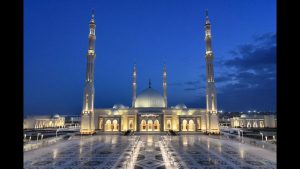
Al-Fattah Al-Alim Mosque
This mosque is a gem of modern Islamic architecture and the jewel in the NAC crown. The mosque stands on 250,000 square metres with a basement of 6,325 square metres with the men’s prayer area for 1,200 worshippers, a women’s prayer hall for 300. An external prayer area of 3,400 square metres is for 3,400 worshippers. The four 90-metre high minarets and the 43-metre high main dome, – the largest in the Middle East – has a diameter of 33 metres along with four 10-metre high domes.
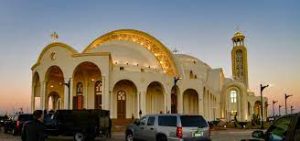
Cathedral of the Nativity of Christ
The cathedral can accommodate 9,200 worshippers on its 15 acre site, making the largest church in the Middle East. The church took 23 months to build and was completed in December 2018 to build it. This is in fact a complex comprising two churches, an event hall and a control room. The cathedral includes the papal offices, the Peoples Church, and an open theatre. The diameter of its 36-metre high main dome is 40 metres. There are two towers, each 60 metres high. It has a two-level underground car park. The cathedral was officially opened on 6 January 2019.

Islamic Cultural Centre and Masjid Misr
Misr Mosque has three mentions in the Guinness World Records for the largest pulpit, the largest chandelier and the heaviest chandelier. The mosque has a pulpit 16.5 metres high and a chandelier 22 metres high, 22 metres wide and weighing 25 tons. The Islamic Cultural Centre stands on an area of 15,000 square metres and can accommodate 130,000 worshippers and parking for 4,000 cars. The centre has a Qur’an teaching area.
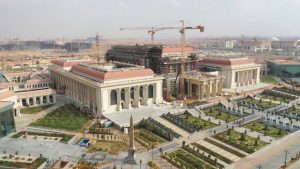
Arts and Culture City
The Arts and Culture City occupies a prime location in the NAC on 122 acres and is linked to Al-Masa Capital by pedestrian bridge. The project comprises a 25-acre forest and an open-air theatre. The Arts and Cultural City is home to the Opera House Main Building (86,000 square metres) and the Artistic Creativity Centre and Wax Museum (8,500 square metres). The city has a Central Library (9,000 square metres),the House of Oud Building (700 square metres), the Contemporary Music Building (700 square metres) and the Documentary Cinema Building with studios and galleries.
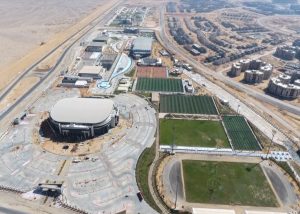
Sports and Olympic City
This multi-purpose venue with seating capacity of 93,440 will become Egypt’s new national stadium, replacing Cairo International Stadium. It is the second largest facility in Africa, second only to the FNB Stadium in Johannesburg, South Africa. The city includes two large sports halls, an Olympic-standard swimming pool, tennis and squash courts, training facilitiesas well as administrative, cultural and hotel buildings. It is here that major sporting events such as the Olympics and the World Cup will be held.
It was designed by Italian firms SHESA Architects and MJW Structures, responsible for the Juventus Stadium in Turin and the Paul Biya Stadium in Yaoundè, Cameroon.
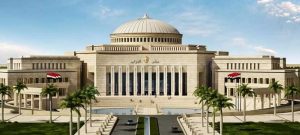
Government District
In the Government District are the presidential building, the cabinet headquarters, 34 ministries, and the Parliament. Many foreign ligation are to be found here. The Government District is 15 minutes away from the residential and 10 minutes away from the church of the Nativity and the Al-Massa Hotel. The Houses of Parliament are opposite the cabinet building. On its right is the Presidential Complex.
Residential area
The residential district accounts for 67 per cent of the total area of the NAC. In the first phase of construction, 190 detached houses and 71 apartment blocks. Phase II consists of 139 villas and 50 apartment blocks on 15,000 acres. In addition are several residential compounds in the NAC of various unit types and sizes.
Central business district
The CBD is the smart and sustainable core of the NAC, starting with the headquarters of the Central Bank of Egypt and the Egyptian Stock Exchange. The National Bank of Egypt, Banque Misr and Banque du Caire are also located here.
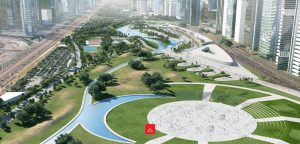
Green River
The Green River will flow from the Cairo Ring Road to the Regional Ring Road passing through the Central Business Park. On its banks, there will be a botanical garden and a park showcasing Islamic architecture. All 20 neighbourhoods of the new capital will be linked to the Green River. The 10-square kilometre central park will be one of the largest in the world.

New Capital monorail
The 56.5-kilometre Cairo monorail will link the NAC with central Cairo and western Cairo – 6 October City, Sheikh Zayed City and Giza.



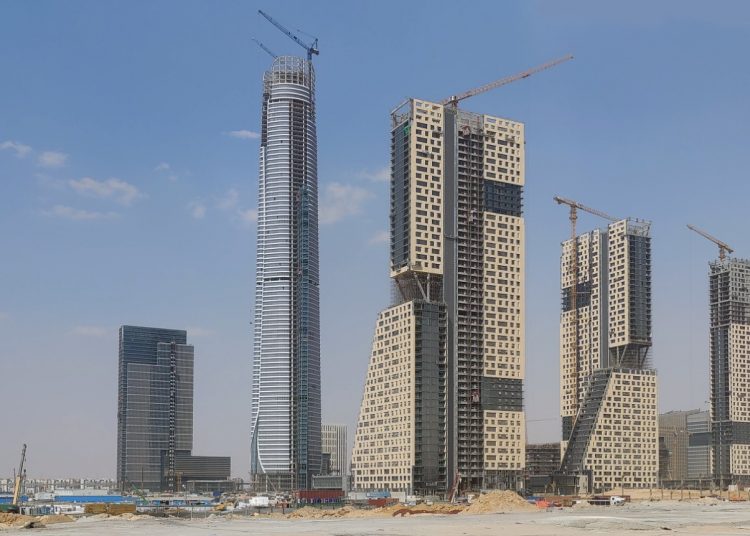


Discussion about this post